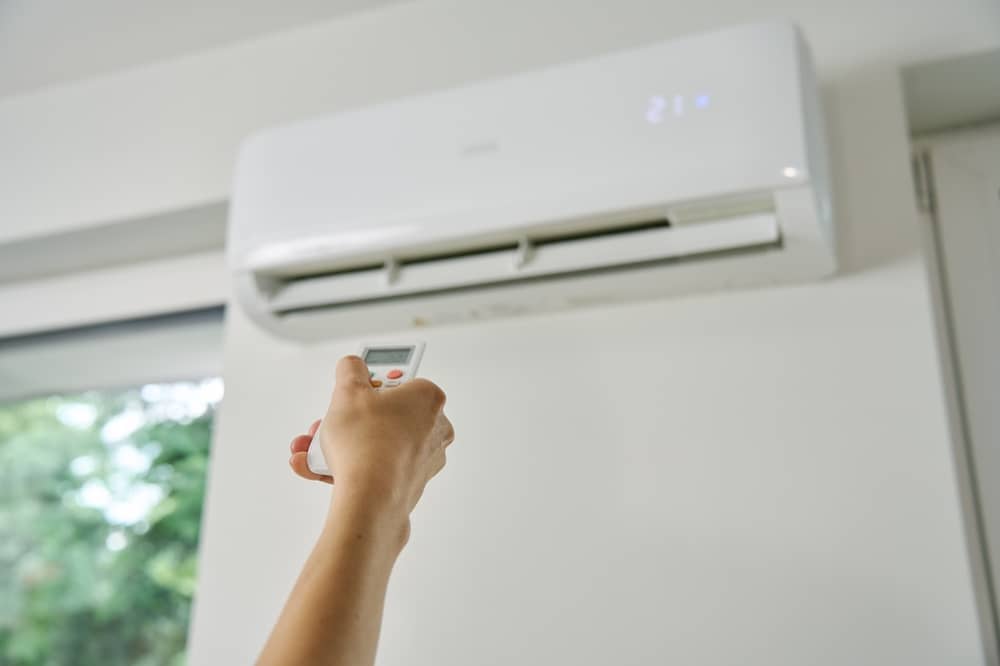
Guide to Emergency AC Unit Shutdown Steps
Sometimes, extreme happenings force extreme measures. Like a fire, flooding inside the home, smoke, banging sounds, or strong smells emanating from your HVAC system. If one of these things is happening, you need to perform an emergency shutdown of your unit to prevent damage to the system or your home. The next step is contacting an emergency HVAC repair technician to conduct a thorough inspection and repair any damage before it gets worse.
When an air conditioning unit fails, homeowners often panic, unsure of the right steps to take. This guide outlines essential actions for an emergency AC shutdown, including how to safely disconnect the power and assess the HVAC system before restarting. By following these steps, readers will gain confidence in managing emergencies and understanding when to seek expert assistance, preserving optimal customer service and safety. With the right knowledge, such as knowing the importance of refrigerant management during a shutdown, homeowners can effectively handle situations without unnecessary stress.
Understand the Circumstances Requiring an Emergency AC Shutdown
Recognizing signs of AC system failure is crucial for maintaining home comfort and safety. Evaluating potential hazards to health is essential when determining if a shutdown is necessary, especially in cases of a malfunctioning thermostat or an unusual glitch in the system. In such cases, contacting emergency AC repair can be crucial. Knowing the optimal timing for shutting down the unit can prevent further damage and provide safety, making these considerations vital for effective HVAC management.
Recognizing Signs of AC System Failure
Homeowners should closely monitor their AC systems for signs of trouble that can indicate failure. For instance, an unexpected increase in energy bills may suggest that the unit is working harder than usual due to a malfunctioning pump or valve. Additionally, if the air conditioning system is not maintaining the desired temperature or if strange noises are present, these could be early warning signs that a shutdown is necessary to mitigate risk and prevent further damage.
Another important factor to consider is the impact of a power outage on an AC system. Power fluctuations can lead to significant strain on components, potentially leading to system failure. If a homeowner notices that their air conditioning unit stops responding after a power outage or exhibits erratic behavior upon restart, it is critical to evaluate the situation and consider shutting down the unit to safeguard its functionality. Recognizing these indicators can help prevent more severe complications:
Evaluating Potential Hazards to Health and Safety
When evaluating potential hazards associated with an air conditioning system, owners should prioritize safety concerns related to airflow and electrical components. A malfunctioning heat pump can disrupt air circulation, resulting in inadequate cooling and increasing the risk of heat-related illnesses, especially during high temperatures. In addition, inspecting the wiring diagram for any irregularities is crucial, as faulty wiring can lead to hazards such as electrical fires or system failures.
Homeowners should remain vigilant for signs of issues with the compressor, as problems here can severely affect system performance and safety. If the compressor becomes overheated, it can cause further damage to the unit or compromise safety levels within the home. Troubleshooting these problems early can minimize risks; therefore, it is advisable to shut down the system and consult a professional if there are any doubts about the operation of the AC unit.
Determining Optimal Timing for Shutdown
Determining the optimal timing for shutting down an AC unit is essential to prevent further damage and secure safety. When unusual noises or fluctuations in performance occur, homeowners should immediately assess the situation, considering whether the air conditioning system is malfunctioning. If the system exhibits erratic behavior, such as failing to cool the basement or areas of the home, it may be wise to cut power at the circuit breaker to protect the unit and monitor for any potential complications.
In situations where overheating or severe mechanical issues arise, acting quickly becomes critical. Energy efficient HVAC systems can typically handle fluctuations, but prolonged stress can lead to significant issues. Homeowners should consider using a backup cooling method while waiting for professional HVAC services to inspect the unit, making sure their living space remains comfortable during the shutdown process.
Locate the AC Unit Control Access Points
Identifying the main power supply is crucial for an emergency AC unit shutdown. Homeowners should locate the emergency shutoff switch, which acts as a quick response option during critical situations. Understanding circuit breaker locations is also important, as this allows for immediate disconnection of power to the unit. This section will outline how to locate these essential control access points effectively.
Identifying the Main Power Supply
Identifying the main power supply for an air conditioning unit is a critical step in an emergency shutdown situation. Homeowners should locate the emergency shutoff switch and understand its function, as this gear allows for quick disconnection of power to prevent injury. Recognizing the circuit breaker that controls the AC system can further enhance response time during urgent circumstances, making sure the unit is safely powered down.
Finding the Emergency Shutoff Switch
Finding the emergency shutoff switch for an air conditioning unit is a crucial part of HVAC maintenance. This switch is typically located near the outdoor unit or on an adjacent wall inside the home. Understanding its location allows homeowners to act swiftly in case of an emergency, such as a malfunction or excessive frequency of unusual noises, preserving the safe and efficient operation of air conditioning services.
In most cases, the emergency shutoff switch will have a clearly marked label that makes it easy to identify. Familiarity with this switch empowers homeowners to quickly disconnect power during emergencies, reducing the risk of further damage to the AC unit. For those uncertain about its location, seeking assistance from professional HVAC maintenance can provide clarity and enhance safety in emergency situations.
Understanding Circuit Breaker Locations
Understanding the locations of circuit breakers is vital for homeowners who are aiming for quick action during an emergency AC shutdown. The circuit breaker panel is often found in utility rooms, basements, or garages, and it typically contains multiple switches that control different electrical circuits. Familiarity with these locations allows homeowners to respond rapidly if their air conditioning system experiences a malfunction, minimizing potential damage and keeping the home safe.
Homeowners should take the time to label each breaker, particularly the ones associated with the HVAC system, for easy identification in urgent situations. When the AC unit fails or exhibits unusual behavior, being able to efficiently locate the corresponding circuit breaker can significantly expedite the shutdown process. This knowledge not only promotes effective HVAC management but also enhances overall safety within the home.
Disconnect the Power Safely
For a safe emergency AC shutdown, homeowners should follow specific steps. The process begins with turning off the thermostat to stop the cooling cycle. Next, shutting off the circuit breaker for the AC unit cuts power, preventing any hazards. In some cases, physically disconnecting the unit might be necessary to safeguard both the system and the home.
Steps to Turn Off the Thermostat
Turning off the thermostat is the first critical step during an emergency AC shutdown. Homeowners should set the thermostat to the “off” position, stopping the cooling cycle immediately. This action prevents additional strain on the system and safeguards against potential hazards caused by a malfunctioning unit.
After turning off the thermostat, it is recommended to wait for a few minutes before proceeding to disconnect the power from the circuit breaker. This brief pause allows any residual power within the system to dissipate, making the subsequent steps safer. Homeowners can then move on to shutting off the circuit breaker for the AC unit, effectively powering the system down:
Shutting Off the Circuit Breaker for the AC Unit
Shutting off the circuit breaker for the AC unit is a vital step in a safe emergency shutdown. Homeowners must locate the appropriate circuit breaker that controls power to the air conditioning system. Once identified, flipping the breaker to the “off” position effectively disconnects the unit, preventing electrical hazards and further damage to the system.
After shutting off the circuit breaker, it is essential to confirm that the AC unit is no longer operational. This precaution confirms any malfunctioning components are fully powered down, which minimizes the risk of overheating or additional issues. Following this step provides peace of mind while waiting for professional HVAC assistance:
Physically Disconnecting the Unit, When Necessary
When a situation arises that requires an emergency shutdown of the AC unit, physically disconnecting the system becomes a vital step. This action is particularly necessary if the AC unit continues to show signs of malfunction after the circuit breaker has been turned off. By unplugging the unit or disconnecting it from its power source, homeowners can further reduce the risk of electrical hazards and prevent any potential damage to the system.
It is essential for homeowners to know how to safely disconnect the air conditioning unit when conditions call for it. If the unit is equipped with a disconnect box near the outdoor condenser, removing the cover and pulling the plug will ensure all power is cut off completely. This precaution helps maintain safety while awaiting professional HVAC assistance, allowing homeowners to address other concerns without the worry of additional complications arising from the AC system.
Assess the Situation Before Restarting
Before restarting the AC unit, it is essential to check for visible damage or leaks that may have occurred during operation. Evaluating the air filter and ductwork conditions confirms optimal airflow and efficiency. Additionally, listening for any unusual sounds post-shutdown can help identify potential issues. These assessments provide valuable insights for effective HVAC management and safe operation of the air conditioning system.
Checking for Visible Damage or Leaks
Checking for visible damage or leaks after an emergency AC shutdown is critical for safe operation. Homeowners should conduct a visual inspection of the outdoor and indoor units, looking for any signs of fluid leakage, cracks, or dents. Addressing these issues promptly can prevent further complications and keep the air conditioning system operating efficiently upon restart.
Additionally, examining the air filter and ductwork for blockages or damage can enhance airflow and system performance. If the air filter appears dirty or clogged, homeowners should consider replacing it before restarting the unit. This practice not only improves energy efficiency but also contributes to better indoor air quality, addressing common concerns for families and promoting a comfortable living environment.
Evaluating Air Filter and Ductwork Conditions
Evaluating the air filter and ductwork conditions is crucial for the efficient operation of an air conditioning system. A dirty or clogged air filter can significantly impair airflow, leading to overworking of the unit and higher energy bills. Homeowners should inspect the filter regularly and replace it as needed to maintain optimal performance and indoor air quality. This practice not only minimizes potential damage but also contributes to a healthier living environment.
In addition to the air filter, assessing the ductwork is essential for effective HVAC management. Homeowners should look for any visible blockages or signs of damage within the ducts, such as dents, leaks, or disconnects. If any issues are identified, addressing them promptly can enhance airflow and system efficiency. Here’s a summarized view of these key maintenance steps:
Listening for Unusual Sounds Post-Shutdown
Listening for unusual sounds post-shutdown is crucial for evaluating the air conditioning unit’s condition before a restart. Homeowners should remain alert for any sounds like hissing, clanging, or buzzing, which may indicate underlying issues like refrigerant leaks or mechanical failures. Ignoring these noises can lead to more significant complications, resulting in costly repairs or further system damage.
To address potential problems, homeowners should conduct a thorough inspection of their AC unit while listening closely. If any unusual sounds persist during this inspection, it is advisable to consult a professional HVAC technician for guidance. Documenting the sounds and any visible issues can assist the technician in diagnosing the situation more effectively:
Document the Incident
Documenting the incident following an emergency AC unit shutdown is vital for effective HVAC management. Homeowners should keep a record of symptoms and actions taken, noting the time and conditions of the shutdown. Preparing this information will assist HVAC professionals in diagnosing the issue more efficiently, leading to prompt and appropriate repairs to restore comfort and safety.
Keeping a Record of Symptoms and Actions Taken
Keeping a detailed record of symptoms and actions taken during an emergency AC unit shutdown is essential for effective HVAC management. Homeowners should note any unusual sounds, temperature fluctuations, or performance issues their air conditioning system exhibited prior to the shutdown. Documenting these factors helps HVAC professionals diagnose the problem more efficiently and devise an appropriate solution that restores comfort to the home.
In addition to recording symptoms, homeowners should also log the specific actions they took, such as turning off the thermostat and shutting off the circuit breaker. This information not only aids technicians in understanding the owner’s response but also promotes effective communication about the AC unit’s condition. By being thorough in documentation, homeowners can enhance the repair process and contribute to preventing future issues with their HVAC system.
Noting the Time and Conditions of the Shutdown
Noting the time and conditions of the AC unit shutdown serves as a critical element in effective HVAC management. Homeowners should keep a detailed record of when the shutdown occurred and any relevant details about the situation leading up to the event. For example, documenting the outdoor temperature or any strange noises heard prior to shutting down the unit can provide HVAC professionals with essential context for diagnosing potential issues more efficiently.
In addition to timing, noting conditions such as whether the AC unit was experiencing high demand or exhibiting unusual behaviors is vital. This information not only helps technicians address the immediate problem but also aids in identifying any underlying issues that could lead to future malfunctions. By maintaining accurate records, homeowners can enhance communication with HVAC experts and facilitate a smoother repair process.
Preparing Information for HVAC Professionals
Preparing detailed information before contacting HVAC professionals is vital for efficient service. Homeowners should compile symptoms like unusual sounds, lower airflow, or temperature inconsistencies observed leading up to the emergency AC shutdown. This comprehensive account not only aids technicians in diagnosing the issue but also streamlines the repair process, providing timely restoration of comfort to the home.
Additionally, documenting specific actions taken, such as adjusting the thermostat and shutting off the circuit breaker, enhances communication with service technicians. Including relevant details, like the date, time, and conditions surrounding the shutdown, offers further context that may assist in troubleshooting difficult issues. Accurate and organized information empowers HVAC professionals to assess the situation effectively and implement repairs more efficiently:
Seek Expert Assistance When Needed
Knowing when to call a technician is essential for effective HVAC management, especially during an emergency AC unit shutdown. Homeowners should be aware of signs that indicate professional assistance is needed, such as persistent malfunctions or safety concerns. Choosing qualified HVAC service providers and preparing adequately for the service appointment can facilitate a smoother repair process. Each of these topics provides practical insights to help homeowners address AC issues effectively.
Knowing When to Call a Technician
Homeowners should be aware of specific signs that indicate the need for professional HVAC assistance. If the air conditioning unit continues to exhibit unusual noises, smells, or fails to operate effectively after a shutdown, it is time to consult a technician. Ignoring these signals can lead to further damage and increased repair costs, making timely intervention crucial for maintaining comfort and safety.
Additionally, if there is visible damage to the AC unit or if the system exhibits erratic behavior following power outages, seeking expert help is advisable. Experienced HVAC professionals can diagnose any issues and recommend appropriate solutions, making sure the unit operates efficiently. Taking prompt action in these situations not only enhances the system’s longevity but also safeguards the well-being of the household.
Choosing Qualified HVAC Service Providers
When selecting HVAC service providers, homeowners should prioritize those with a strong reputation and proven track record. Researching online reviews and ratings, such as those found on Google or the Better Business Bureau, can provide insights into a company’s reliability and customer satisfaction. Engaging a certified technician guarantees the job is completed efficiently and safely, protecting both the HVAC system and the household.
Additionally, homeowners should look for providers that offer transparent pricing and detailed service descriptions. Qualified technicians are typically willing to explain the services needed and provide estimates before any work begins. This open communication not only builds trust but also allows homeowners to make informed decisions during emergency situations when efficiency is critical:
Preparing for the Service Appointment
Preparing for a service appointment regarding an emergency AC unit shutdown is essential for effective communication with HVAC professionals. Homeowners should gather all relevant information, including the symptoms noticed, the actions taken before the shutdown, and any unusual sounds or behaviors observed during operation. This organized approach allows technicians to quickly understand the situation, making it easier for them to diagnose and address the issue efficiently.
Additionally, it is beneficial for homeowners to have documentation ready, such as the date and time of the shutdown and details about any external factors that may have contributed to the issue. This preparation not only aids technicians in their assessment but also reinforces trust and transparency during the repair process. Being well-prepared ultimately leads to a smoother service experience and helps make sure the air conditioning system is restored to optimal performance levels.






